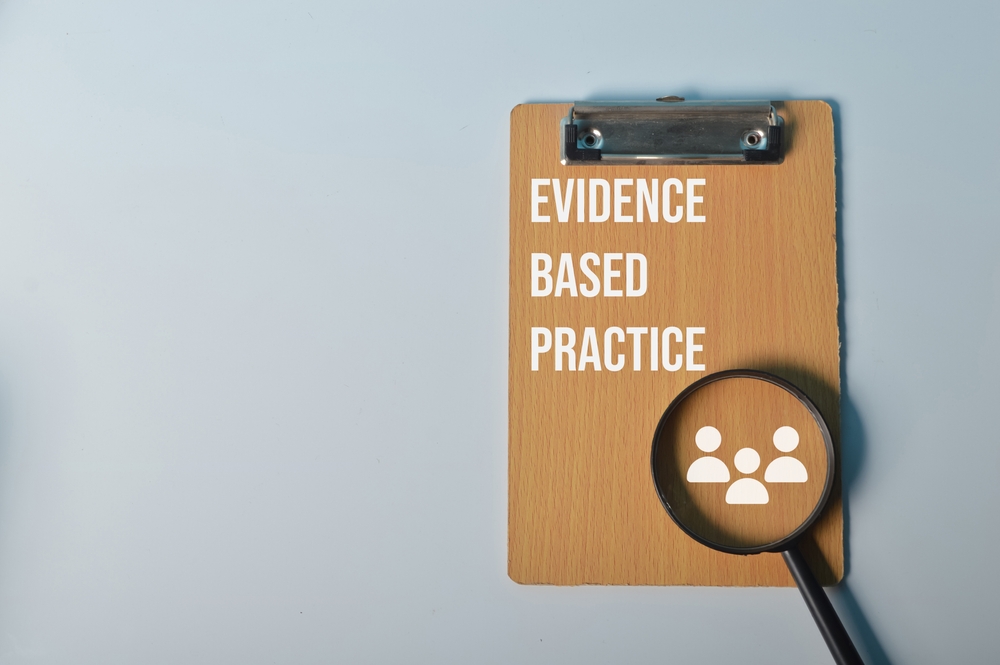Shared decision making: a vital aspect of everyday care in all healthcare settings
Posted on 23rd December 2021 by Tiffany Karpin

Shared decision-making (SDM) is a collaborative process between physician and patient that is applicable to any clinical decision, whether diagnostic, therapeutic, or preventive in nature (1,2). SDM is an expression of patient-centered care, where patients are empowered to exercise their autonomy through informed healthcare decision-making (1,3-5).
A 2020 national survey indicated that 74-77% of patients were satisfied with their degree of involvement in the decision-making process of their health. (6) SDM has been incorporated into national policy across Western countries as it has been shown to improve decision quality, decision-making processes, patient outcomes, risk perception, patient adherence and autonomy, while also lowering healthcare costs and healthcare resource utilisation (2,4,7). Therefore, there is an ethical imperative for SDM to be routinely incorporated into everyday patient care within all healthcare settings (3).
The Clinical Efficacy of SDM
SDM promotes patient-appropriate care, decreases overtreatment, improves health outcomes and therefore reduces overall health-care costs and disease burden on society (1). SDM has shown to improve decision quality across many specialties including Primary Care, Mental Health, Paediatrics, Palliative Care, Medicine and Surgery (10).
Diabetes Management
For example, Saheb et al (11) highlighted an association between SDM and decision quality, patient knowledge and patient risk perception in type 2 diabetes. SDM is appropriate for diabetes care, in particular due to the numerous management and treatment options available for the condition, which each have an impact on a patient’s long-term lifestyle (1,11). Therefore, SDM is considered to be the crux of patient‐centered care, as its facilitation empowers both patient choice and involvement, thereby positively impacting overall healthcare outcomes and disease burden (2,3).
SDM is considered to be the crux of patient‐centered care, as its facilitation empowers both patient choice and involvement…
Antibiotic Prescriptions
SDM is clinically effective in specific clinical scenarios such as the reduction of antibiotic consumption in acute respiratory infections (ARIs), as well as mental health management. (1,12) Coxeter et al (12) highlighted that within the primary healthcare setting, the discussion of the benefits and harms of antibiotics for ARIs and the prioritisation of informed patients’ preference, led to the decrease in antibiotic prescription. This outcome was attributed to the patient’s high decision involvement and self-efficacy and their subsequent low decisional conflict when SDM was used in the primary healthcare domain (1,12).
Mental Health Management
Similarly, Alguera-Lara (13) concluded that SDM was significantly effective in both mental health service delivery and patient recovery. The study highlighted that there was symptom reduction, improved self-esteem, increased patient satisfaction in care management, increased treatment adherence and decreased rates of hospitalisation following the incorporation of SDM into mental health care. Therefore, SDM offers significant clinical efficacy in the patient care, management and treatment and as such, should be routinely practiced within all healthcare settings (1-3).
…symptom reduction, improved self-esteem, increased patient satisfaction in care management, increased treatment adherence and decreased rates of hospitalisation following the incorporation of SDM…
The Use of Decision Aids to Facilitate SDM
The communicative process of SDM can be facilitated using evidence‐based decision aids (DAs), which synthesize data from epidemiologic studies and clinical trials to assist patient engagement in making informed decisions in their healthcare (4,5,8). Studies have supported the use of DAs to improve patient knowledge of the options, benefits and risks of each clinical intervention, to help patients feel more informed, more engaged and more decisive regarding their healthcare values (4,8,9). Overall, DAs facilitate SDM by reducing the proportion of undecided patients, meeting patient satisfaction with the decision‐making process and ultimately enhancing patient‐physician communication (4,9).
DAs are “a component within the toolbox for SDM approaches” that facilitate patient-centered care and patient–physician communication, which can significantly change clinical outcomes in comparison to usual care (1,4). For example, Stacey et al’s review (9) found significant evidence that DAs improved patient knowledge and quality of care expectations when compared to usual clinical care. In particular, DAs were more effective than usual care for conveying accurate risk perceptions to the patient: for every 1000 people, 269 were likely to accurately interpret risk when receiving the usual care, in comparison to 447-716 people accurately interpreting risk after using a DA (9). Therefore, the use of DAs foster the development of value-based, informed healthcare decision making by the patient, which ultimately improves the quality of patient care (1).
…the use of DAs foster the development of value-based, informed healthcare decision making by the patient, which ultimately improves the quality of patient care.
Additionally, Stacey et al determined DAs to be more effective than usual care for increasing a patient’s understanding and participation in the SDM process. In particular, DAs increased the knowledge scores of patients (in absolute values, the group receiving usual care had an average of 57 of 100 answers correct in comparison to an average of 70 of 100 answers correct in the DA group), reduced patients’ “feeling unclear about values”, increased patient participation in decision making and subsequently decreased clinician‐controlled decision making (9). Therefore, since DAs are intrinsically linked with supporting patient engagement and improving the quality of a patient-centered decision-making process, improved patient outcomes within the healthcare settings can be achieved (1,4,9).
The Limitations of the SDM Process
Despite many countries’ health policy commitment to SDM implementation within clinical practice guidelines, evidence suggests that there is poor implementation of SDM in routine healthcare settings (5,8). A number of barriers to the application of SDM by medical professionals have been identified. These include time constraints, poor physician communication, the absence of trust in the therapeutic relationship and the lack of a standardised SDM practice (1-3, 7,8). Moreover, a lack of familiarity with DAs by physicians or the use of DAs for patients with limited English proficiency, visual, hearing or cognitive impairment, or low health literacy can limit the efficacy of what DAs can offer (1,8,15). As such, there are many limitations to SDM that physicians and national health policy must both consider and overcome, to ensure that SDM is routinely incorporated into everyday patient care in all healthcare contexts (5,8).
Time Management
Communication is a crucial component underpinning the SDM process, and its effective execution in a patient-physician consultation can have a significant impact on the care outcomes of the patient (1,2). In regards to the barrier of time constraints, the culmination of medical practitioners pressured to maintain short consultation times and patients’ concerns of a doctor’s busy schedule, exacerbate poor SDM application in everyday healthcare settings (2). However, the time burden of SDM could be overcome through the use of SDM practiced over several sessions, rather than a single session (2).
Health Literacy
Poor physician communication includes the provision of sparse or incomplete medical information, not adequately eliciting patient input and the use of highly technical medical language. Consequently, poor communication leads to patient confusion and fear regarding their own care and impairment to patient decision making (2). A good patient-practitioner relationship was defined as one built on trust, respect and empathy, which is vital for when patients are engaging in SDM, especially if patients do not possess a high level of health literacy (2,7). By overcoming these communication barriers, it allows more time to facilitate effective communication and trust within the patient-physician therapeutic relationship, as well as improve the rates and efficacy of SDM utilisation within healthcare settings (1,2).
A good patient-practitioner relationship was defined as one built on trust, respect and empathy, which is vital for when patients are engaging in SDM…
Standardisation of SDM Practice
Additionally, despite the ethical imperative for the application of SDM when guiding patient-centered care, there is no established standardised SDM practice available for clinicians to use and so the SDM model is broad and not uniform (3,7). Makoul and Clayman (14) identified 161 differing definitions of what SDM as a concept entails and while similarities exist between such models, significant heterogeneity between the practices remain (3,7). Much of the heterogeneity identified can be attributed to almost half of the models having been developed for decision-making, spanning numerous diagnostic, therapeutic and preventive interventions (7,14). Therefore, clarity and standardisation regarding what SDM should constitute in differing healthcare settings is essential for routine SDM implementation, as well as healthcare training, policy formation and the continued research into the efficacy of SDM practices (3,7).
Conclusion
Overall, this review demonstrated the effectiveness of SDM in empowering patient autonomy, patient knowledge, reducing decisional conflict and fostering patient satisfaction with the decision-making process (1-7). SDM is essential to meeting the individual needs of the patient and when considering the significant benefits that SDM provides towards patient care outcomes, it is ethically imperative for SDM to be routinely incorporated into everyday patient care practices within all healthcare contexts (2,3,5). In addition, DAs possess a high level of clinical potential for improving patient participation in SDM, increasing understanding on disease and risk perception, as well as reducing decisional conflict for therapeutic decisions and care (1,10).
Future research should attempt to quantify the degree to which SDM implementation differs across different types of healthcare systems at an individual, organisational and systems level (3). More research is needed to adequately assess the effect DAs have in regards to patient outcomes across medical specialties beyond primary care, as well as population demographics (1).




